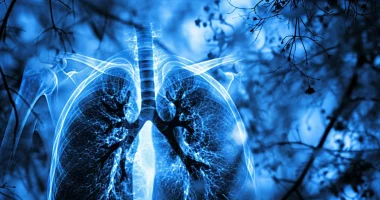Acromegaly is a rare illness caused by too much growth hormone in the body. Normally, a gland in the brain called the pituitary gland makes this hormone. But if there’s a tumor in the gland, it can make too much.
This condition can make muscles weaker, bones less healthy, and energy levels lower. It can also cause strange changes in how a person looks and lead to other health problems. It might take a long time for these changes to show up.
Sadly, people with acromegaly might not live as long as others. On average, they might live 10 years less.
In the United States, only a few people—around three to four out of every million—are diagnosed with acromegaly each year. At any given time, about 60 out of every million people have it.
Symptoms
Acromegaly symptoms don’t happen all at once; they take time to show up.
The changes in how a person looks can be really noticeable. Their tongue and jaw might get bigger, and they might have space between their teeth. Their brow might stick out more, and their hands and feet could swell up. Their skin might feel oily and rough, and they might get small bits of extra skin called skin tags.
There are other changes, too. Their hands and feet might feel tingly or numb, and they might sweat a lot. They might get headaches and their voice might sound deeper. Sometimes, their vision might not be as good.
Acromegaly can also make internal organs, like the kidneys, heart, lungs, and liver get bigger.
It’s super rare for kids to get acromegaly, but if they do, it can cause a condition known gigantism, where they grow much taller than usual.
Causes
Acromegaly mostly happens because of a tumor. The tumor makes the body produce too much growth hormone.
Pituitary Adenoma
The most usual type of tumor is called a pituitary adenoma. It’s not cancer, but it can cause trouble because it makes the pituitary gland produce too much growth hormone. This hormone makes the body grow in unusual ways.
These tumors aren’t something that parents pass down to their kids. They usually just happen by chance because of a small change in one cell in the gland. Over time, that cell multiplies and forms a tumor. These tumors don’t extend to other areas of the body, but they can lead to problems because they get big and press on the brain.
As the tumor gets bigger, it squishes the nearby brain tissue. Sinc the skull is closed, there’s not much room for the extra growth, which can cause vision problems and headaches.
The tumor can also mess with the production of other hormones in the body. This can affect men and women differently. Women might notice changes in their periods, while some men might have trouble with getting or keeping erections.
Not everyone with these tumors has symptoms. In fact, about 17 percent of people might have small pituitary adenomas that don’t cause any problems. It’s only when the tumor gets bigger that it starts causing trouble.
Most of these tumors don’t make any hormones. But when they do, about a third of the time, it’s growth hormone that’s causing the issue.
Other causes
In rare situations, a tumor in different parts of the body, like the adrenal glands, pancreas, or lungs, can cause too much growth hormone to be made, leading to symptoms of acromegaly.
These tumors can either make the growth hormone themselves or signal the pituitary gland to make more. For instance, certain tumors in the brain’s hypothalamus can release a hormone called growth hormone releasing hormone (GHRH), which tells the body to make more growth hormone.
Sometimes, acromegaly happens because the body is making too much growth hormone from exterior of the pituitary gland. This can occur with tumors called neuroendocrine tumors, like small cell lung cancer or carcinoid tumors.
Diagnosis
Diagnosing acromegaly can take a while because the symptoms show up slowly, sometimes over many years.
One early sign is when feet and hands start to get bigger and swollen. People might notice this when their shoes and gloves don’t fit like they used to.
Doctors do some tests to confirm if someone has acromegaly.
They might check a hormone called insulin-like growth factor-1 (IGF-1). It’s made in the liver and helps with growth. In acromegaly, the level of this hormone is often too high because too much growth hormone is being made.
Doctors might also check other hormones made by the pituitary gland.
Another test is called an oral glucose tolerance test (OGTT). The person has to fast overnight and then drink a sugary solution. After that, they get their blood tested. Normally, the hormone levels drop after drinking the sugary solution, but in someone with acromegaly, the levels stay high because the body is making too much growth hormone.
To see where the problem is coming from, doctors might also do an MRI scan of the brain. This helps them find out if there’s a tumor and where it is in the brain.
Treatment
Treatment for acromegaly depends on where the tumor is, age of the perosn, and their treatment history.
The goal of treatment is to reduce the extra hormone production, relief any stress from the tumor, balance hormone levels, and better symptoms.
Surgery
One option is surgery to remove the tumor. This can stop the excess growth hormone production and ease pressure on nearby tissues.
During transsphenoidal surgery, surgeons use an endoscope inserted through the nose to reach the pituitary gland. The endoscope goes through the sphenoid bone, which separates the brain from the face.
Growth hormone levels are decreased by the eradication of the tumor. But even after successful surgery, hormone levels might not go back to normal, so more treatments might be needed.
Radiation
Radiation therapy is another way to treat acromegaly, either by itself or along with other treatments.
After the process of surgery, radiation therapy can get rid of any leftover tumor cells. It can be used together with medication to lower growth hormone levels.
There are two types of radiation therapy: conventional and stereotactic radiosurgery.
Conventional radiation therapy is done five days a week for about six weeks. It might take up to 10 years for hormone levels to go back to normal after this treatment.
Stereotactic radiosurgery is more focused. It uses intense radiation beams aimed directly at the tumor, which helps protect the surrounding tissue. This treatment takes fewer sittings than conventional radiation therapy and can lower growth hormone levels faster.
Medications to manage growth
Medication can also help control growth. Some options include dopamine agonists, somatostatin analogs, and growth hormone receptor antagonists. These drugs work by either stopping the release of growth hormone or blocking its action to slow down the rapid growth.
Usually, a associaton of treatments works best for treating acromegaly.
Complications
Acromegaly can lead to several potentially life-threatening complications if not treated. These complications include arthritis, which causes joint pain and stiffness, and cardiomyopathy, a kind of heart disorder that affects the heart muscle and its ability to pump blood. Carpal tunnel syndrome, characterized by tingling and numbness in the hands, and contraction of the spinal cord, which can lead to pain and mobility issues, are also possible.
People with acromegaly are at a higher risk of developing diabetes due to impaired insulin function and hypertension (high blood pressure), which can strain the heart and blood vessels. Hypopituitarism, a condition where the pituitary gland produces fewer hormones, can also occur, affecting various bodily functions.
Kidney failure is another severe complication, alongside loss of vision due to pressure on the optic nerves. Polyps can develop in the colon, increasing the risk of colon cancer. Sleep apnea, a disorder that causes breathing to stop and start during sleep, and uterine fibroids, noncancerous growths in the uterus, are additional concerns.
External Links









